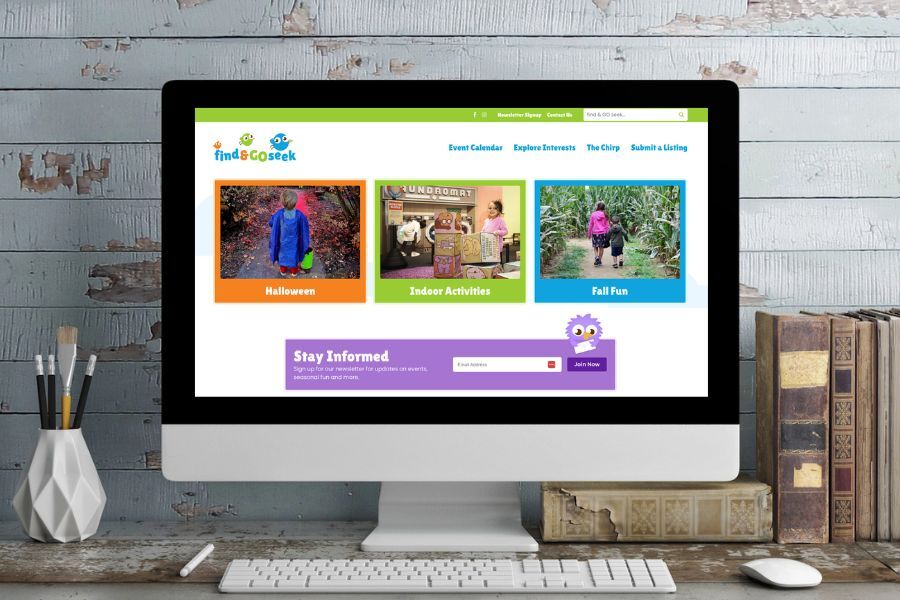In the online world where every click counts, even the smallest text changes can make a big impact. Welcome to the world of microcopy – those tiny bits of text that help users navigate their way!
Testing microcopy with actual users is key to making sure it lands with your target audience. What works for the internal team may not work for real users so testing and iteration is key.
As a digital marketing agency with over 20 years of experience, we know success is in the details. Today we’re talking about microcopy, and how it can improve your website’s user experience so strap in as we dive into the big impact of small text!
The Power of Microcopy: How Small Text Can Improve User Experience
Microcopy refers to the tiny bits of text scattered throughout a website or app, such as button labels, form hints and error messages. These small textual elements help users navigate their way. Often overlooked, microcopy plays a big part in user experience and can affect user engagement, conversion rates and overall satisfaction.
Understanding the user journey is key to writing effective microcopy. By seeing things from the user's perspective, we can create messages that resonate with them and enhance their overall experience.

Why Microcopy:
- Reduces User Friction: Well-written microcopy can smooth out the bumps in the user’s journey, making interactions more intuitive and easy.
- Brings Brand Personality: These small bits of text are the perfect opportunity to inject your brand’s voice and personality into the user experience. User segmentation can help you tailor microcopy to different user groups so it’s more effective and addresses their needs and preferences.
- Boosts Conversions: Clear microcopy can encourage users to take action, increasing conversions.
- Reduces User Errors: Thoughtful microcopy can prevent user mistakes and provide guidance when errors do happen.
- Builds User Confidence: By providing timely information and feedback, good microcopy reassures the user and builds trust in your digital product.
UX Writing Best Practices
1. Speak Your User’s Language
At Eternity we believe in building long-term relationships with our clients. This principle applies to how we write microcopy. Use language that resonates with your target audience by speaking in the user’s voice. Understanding user needs and preferences helps you write messages that increase engagement and satisfaction. Don’t use jargon and technical terms unless they’re relevant to your audience.
For example instead of “404 Error: Page Not Found” try “Oops! We can’t find the page you’re looking for. Let’s get you back on track.”
2. Be Clear and Intentional
In microcopy, each word should serve a purpose and contribute to the user’s understanding or action. Brevity is powerful but don’t sacrifice clarity for the sake of being concise. Sometimes a longer phrase can be more effective.
Knowing what users prefer can help you write clear and intentional microcopy. Insights from methods like interviews and surveys can help you tailor language and interaction design to improve user experience and usability.
3. Provide Timely Feedback
Use microcopy to provide feedback on user actions. This could be as simple as changing a button from “Submit” to “Submitting…” when clicked or a friendly “Great choice!” message when a user selects an option. Keeping users informed about the status of their actions, reduces uncertainty and builds trust.
Visual feedback like animated dots in Google Assistant is key to providing instant feedback and improving user experience.
4. Be Proactive
Think ahead and use microcopy to address user questions or concerns before they happen. For example, near a “Subscribe” button you might add “Don’t worry we hate spam too. You can unsubscribe at any time.”
Let users know what’s happening, like a progress bar during file uploads, to build trust in the process.
5. Bring Your Brand to Life
Microcopy is a great opportunity to show off your brand’s personality. At Eternity we’re friendly, approachable and yes, a little bit goofy at times. UX writing is key to user-friendly microcopy that reflects the brand voice. Your microcopy should sound like you – whether that’s playful, serious or anywhere in between. Just be consistent and real.

6. Praise the User
Celebrate user successes no matter how small. A simple “You’re all set!” after a form is completed can go a long way to improving user experience.
UX writers are key to writing user-focused copy that improves the overall user experience.
7. Make Error Messages Helpful
When errors happen, use a clear and descriptive error message to guide users to a solution rather than just pointing out the problem. For example, instead of “Invalid email,” try “Hmm, that email address doesn’t look quite right. Did you mean …@gmail.com?”
Microcopy Examples: How Small Text Makes a Big Difference
Let’s see some before-and-after examples:
Before: “Submit”
After: “Get Your Free Guide”
Why it works: The revised version tells the user what they’ll get.
User interface elements like microcopy and interaction patterns are key to improving user experience through design and communication.
Before: “Password must be at least 8 characters long and include one uppercase letter, one lowercase letter, one number and one special character.”
After: “Create a strong password: Mix 8+ characters, ABC, abc, 123, &@!”
Why it works: The new version presents the same information in a more user-friendly way.
Before: “Error: Form submission failed”
After: “Oops! We couldn’t send your form. Please check your internet connection and try again.”

Measuring UX Impact: How to Measure Microcopy
Like any other aspect of digital marketing, you need to measure the impact of your microcopy changes. Here are some metrics to track:
- Conversion Rates: How do changes to microcopy impact conversion rates for key actions?
- Time on Task: Do users complete tasks faster with better microcopy?
- Error Rates: Do clearer instructions and feedback reduce user errors?
- User Feedback: Collect qualitative data through surveys or user testing to measure microcopy.
- A/B Testing: Test different microcopy versions to see which one wins.
User research is key to gathering insights through interviews and surveys to inform the UX writing process and measure microcopy changes.
As you start to optimize your website’s microcopy remember it’s an ongoing process. Keep testing, refining and most importantly listening to your users.
Convert with Microcopy
At Eternity, we know building a successful online presence is more than just pretty pictures. It’s about creating a smooth user experience–and microcopy is key to that.
UX designers and writers need to work together to create microcopy that converts.
Get in touch with Eternity today, and let’s make magic happen! 🔮🪄





